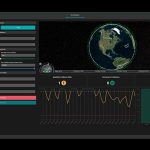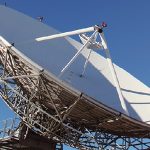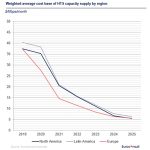Honeywell's JetWave MCX terminal delivers high-speed connectivity to meet the requirements of government and defence operators using SES' network of satellites.
 Honeywell, SES, and Hughes have demonstrated multi-network, multi-orbit high-speed airborne connectivity for military customers.
Honeywell, SES, and Hughes have demonstrated multi-network, multi-orbit high-speed airborne connectivity for military customers.
The companies announced that airborne demonstrations used Honeywells JetWave MCX terminal with a Hughes HM-series modem, paired with SES satellites in Medium-Earth Orbit (MEO) and Geostationary Earth Orbit (GEO) satellites, including the government-dedicated GovSat-1 satellite.
Airborne demonstrations showed that Honeywells JetWave MCX terminal is compatible with various Ka-band network capabilities and can provide military customers with network resilience that supports primary alternate contingency and emergency (PACE) communication requirements. Additionally, SES MEO constellation provided both lower latency and fiber-like connectivity during the demo flights, with full-duplex data rates of more than 40 megabits per second.
To achieve additional levels of security, the companies leveraged the military Ka-band government frequencies delivered via the SES GovSat-1 satellite and the software-defined Hughes HM-series modem. These capabilities ensure that todays warfighters have the data they need, when and wherever they need it, including in contested and high-activity environments.
Steven Williams, Vice President, Defense Americas, Honeywell Aerospace, said: “Honeywell and SES are ensuring that military operators and their warfighters stay connected anytime around the globe. The ability to give network choices to operators using our agnostic terminal means the customer can choose the best network for the mission and geographic region.”
Will Tong, Vice President of Strategic Government Initiatives and head of the Government Aerospace Market, SES, added: “The SES and Honeywell capabilities showcased during the airborne demonstration are revolutionary for governments as they show how next-generation satellite networks can efficiently support data-intensive government aero capabilities. By leveraging the open space, ground and waveform architecture of SES O3b MEO and the secure frequencies of GovSat-1, as well as the network-agnostic MCX terminal, we managed to show impressive throughput while enabling secure sovereign networks for government end users.”
Rick Lober, Vice President and General Manager, Hughes Defense, stated: “We appreciate the opportunity to collaborate with Honeywell on these critical demonstrations of resilient airborne connectivity using the Hughes HM System across multiple constellations and orbits. Our equipment and systems integration enabled far greater throughput ideal for both en-route and air-to-ground applications and showcased how our low probability of intercept/low probability of detection waveform can enhance the militarys PACE planning.”
Ready to deploy now, Honeywell JetWave MCX is a dual-polarity, wideband Ka-band satellite terminal that meets the needs of military and other government aircraft for surveillance, defence or humanitarian missions such as search and rescue operations. Honeywells JetWave MCX terminal enables access to nearly any Ka-band network and meets the increased needs of the defence operator.
SES multi-orbit network comprises over 70 GEO and O3b MEO satellites, offering global coverage and a high-throughput, low-latency carrier-grade communications service. The companys second-generation MEO system, O3b mPOWER, will deliver unprecedented throughput with increased flexibility to adjust forward and return link data ratios securely. This makes it a game-changer for todays intelligence, surveillance and reconnaissance missions that rely on real-time information exchange and analysis of sensitive mission data. When operational in 2022, O3b mPOWER will be capable of delivering from tens of megabits to multiple gigabits per second to support government applications in any location.













































































